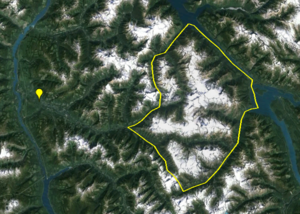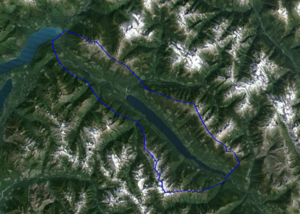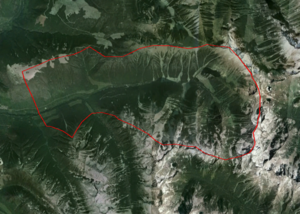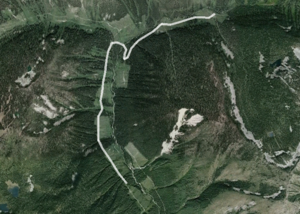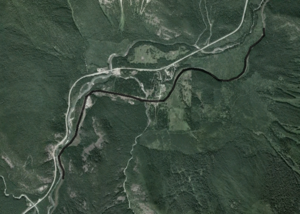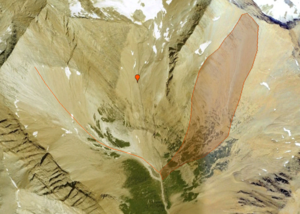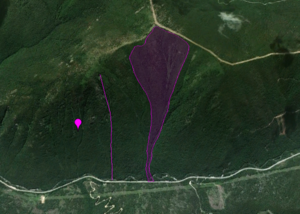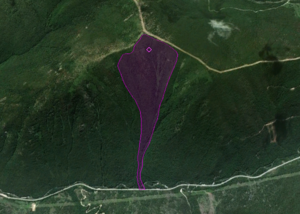Difference between revisions of "Location catalog overview"
Jump to navigation
Jump to search
| Line 7: | Line 7: | ||
===Loocations types=== | ===Loocations types=== | ||
| − | The InfoEx system currently supports the following location types | + | The InfoEx system currently supports the following location types: |
| + | *Operation location | ||
| + | *Forecast area | ||
| + | *Operating zone | ||
| + | *Permanent closure | ||
| + | *Road | ||
| + | *Rail | ||
| + | *Route | ||
| + | *Ski run | ||
| + | *Avalanche path | ||
| + | *Weather site | ||
| + | *Shot placement | ||
| + | |||
| + | See [[Location types and symbology]] for a detailed list of supported location types and the symbols used to display them on the location catalog map. | ||
{|class="TblGeneral" | {|class="TblGeneral" | ||
| Line 57: | Line 70: | ||
|'''Shot placement''' | |'''Shot placement''' | ||
|Location on an avalanche path regularly used for avalanche control with explosives | |Location on an avalanche path regularly used for avalanche control with explosives | ||
| − | |[[File:SymbologyShotPlacement.png|300px|thumb|right|Point: | + | |[[File:SymbologyShotPlacement.png|300px|thumb|right|Point: Purple diamond<br/>(shown within avalanche path polygon)]] |
|} | |} | ||
Revision as of 14:20, 20 October 2013
The location catalog is the backbone of the geospatial InfoEx system. This document give a general overview of the location catalog functionality of the InfoEx application.
Background
All observation entered into the InfoEx system need to be associated with a pre-defined location from your location catalog. For certain observation types, it is possible to also specify a more detailed location in the observation entry screen.
Loocations types
The InfoEx system currently supports the following location types:
- Operation location
- Forecast area
- Operating zone
- Permanent closure
- Road
- Rail
- Route
- Ski run
- Avalanche path
- Weather site
- Shot placement
See Location types and symbology for a detailed list of supported location types and the symbols used to display them on the location catalog map.
| Location type | Description | Symbology |
|---|---|---|
| Operation location | Represents main location of operation. Every operation need to have an operation location that acts as the parent for all other locations. | |
| Forecast area | Larger area that represents a unit for avalanche forecasting purposes. Typical spatial scales range from individuals bowls to large sections of western Canada. Typically used by ski areas, highway and railway forecasters, and public avalanche forecasting agencies. | |
| Operating zone | Larger area that represents a unit for avalanche forecasting purposes. Typically used in mechanized and non-mechanized backcountry operations and commonly represent drainages or groups of drainages. | |
| Permanent closure | Permanently closed area of any spatial scales. Typically used in ski areas. | |
| Road | A complete or continuous section of a road. Can be used for both permanent roads (e.g., highways, access roads) and seasonal roads (e.g., cat roads in a catski operation) | |
| Rail | A complete or continuous section of a railway line. | |
| Route | A complete or continuous section of route, typically an uphill ski or climbing route. Primarily used by non-mechanized backcountry operations. | |
| Ski run | Approximate location of a ski run | |
| Avalanche path | Location of an avalanche path | |
| Weather site | Location of a permanent weather or snow profile observation site | |
| Shot placement | Location on an avalanche path regularly used for avalanche control with explosives |
Step-by-step description
| 1. | Description of first step. |
| 2. | Description of second step. |
| 3. | ... |
Related documents
- Link to relate document 1
- Link to relate document 2
Functionality tested by
- Date: Tester / Server / Application version (e.g., Oct. 11: Pascal Haegeli / QA Server / Test Version 0.28.00)
